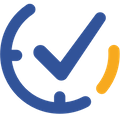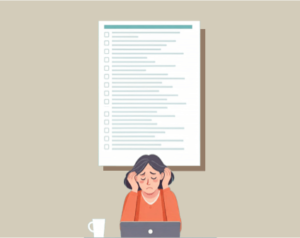We often need clarification about productivity which can significantly hinder our performance. This article aims to dispel common myths and provide strategies for increasing productivity, allowing you to work smarter, not just harder. By challenging these long-held beliefs, we can unlock new levels of efficiency and effectiveness in our daily tasks.
Myth #1: Artificial Intelligence tools will automatically boost your productivity
While AI can be helpful, it’s not a magic solution. Effective use of AI requires understanding its capabilities and limitations, as well as strategic integration into your workflow.
The key to leveraging AI for productivity lies in understanding its role as a collaborative partner, augmenting our human capabilities rather than replacing them. As Andrew Ng, co-founder of Google Brain and former chief scientist at Baidu, emphasizes: “AI is the new electricity. Just as electricity transformed almost everything 100 years ago, today I actually have a hard time thinking of an industry that I don’t think AI will transform in the next several years.” This perspective encourages us to embrace AI as a powerful tool that can enhance our productivity and problem-solving abilities across various domains, while still recognizing the irreplaceable value of human creativity and insight.
Effective Strategies:
• Learn to write effective prompts for AI tools to get the most useful outputs
• Use AI for initial drafts or idea generation, but always review and refine the results
• Integrate AI tools into your existing workflows rather than completely overhauling your processes
• Stay updated on AI advancements and ethical considerations in your field

Myth #2: Longer hours equate to higher productivity
Extended work periods often lead to burnout, decreased output quality, and diminished overall productivity. The law of diminishing returns applies to work hours as much as it does to economic theory.
This myth is particularly dangerous because it can lead to a culture of overwork and burnout. Research consistently shows that after a certain point, typically around 50 hours per week, productivity begins to decline sharply. As psychologist Anders Ericsson noted in his book “Peak: Secrets from the New Science of Expertise,” “The top performers in every field generally maintain a maximum of four to five hours of intense focus per day.”
Effective Strategies:
• Utilize focused work sprints with defined objectives
• Apply the Eisenhower Matrix to prioritize tasks effectively
• Incorporate regular breaks and leisure time to maintain long-term productivity
• Set clear boundaries between work and personal time, especially if working remotely

Myth #3: Digital minimalism is the key to productivity in the modern age
The concept of digital minimalism, popularized by Cal Newport in his book “Digital Minimalism: Choosing a Focused Life in a Noisy World,” offers valuable insights into reducing digital overwhelm. However, it’s crucial to recognize that technology, when used judiciously, can significantly enhance productivity. The key lies in finding a balance that works for your specific needs and circumstances. As tech entrepreneur Nir Eyal points out in “Indistractable: How to Control Your Attention and Choose Your Life,” “The antidote to impulsiveness is forethought. The solution to digital distraction isn’t to get rid of technology; it’s to learn how to control it.”
Effective Strategies:
• Curate your digital tools and apps, keeping only those that genuinely enhance your productivity
• Implement “digital fasting” periods where you disconnect from non-essential technology
• Use technology intentionally – schedule specific times for email, social media, and other potentially distracting activities
• Leverage productivity apps and tools that align with your work style and goals

Myth #4: Remote work automatically leads to increased productivity
While remote work offers flexibility, it also comes with unique challenges that can impact productivity if not managed properly.
The reality of remote work is more nuanced than many assume. While some studies have shown increased productivity in remote settings, others highlight challenges such as isolation and difficulty in separating work from personal life.
Effective Strategies:
• Create a dedicated workspace that mimics a professional environment
• Establish a routine that includes regular start and end times for your workday
• Use virtual coworking sessions or accountability partners to maintain focus
• Invest in proper ergonomic equipment to prevent physical strain and maintain energy levels

Myth #5: Productivity is all about optimizing every minute of the day
Sustainable productivity requires balance, including time for rest, creativity, and spontaneity. This myth often leads to a relentless pursuit of efficiency at the expense of well-being and creativity. In the book “Rest: Why You Get More Done When You Work Less,” Alex Soojung-Kim Pang argues, “Rest is not this optional leftover activity. Work and rest are actually partners. They are like different parts of a wave. You can’t have the high without the low. The better you are at resting, the better you will be at working.”
Effective Strategies:
• Schedule “white space” in your calendar for reflection, creative thinking, or handling unexpected tasks
• Practice mindfulness or meditation to improve focus and reduce stress
• Engage in regular physical activity to boost energy and cognitive function
• Allow for flexibility in your schedule to accommodate both planned and unplanned activities

Productivity is not about conforming to others’ expectations, but about optimizing your performance to achieve meaningful results. Continually assess and refine your methods, embracing both successes and setbacks as opportunities for growth. As you move forward, consider which of these strategies resonates most with your work style and current challenges. Start by implementing one or two new approaches and gradually build your productivity toolkit. With persistence and self-reflection, you can cultivate a sustainable and effective productivity practice tailored to your individual needs.




